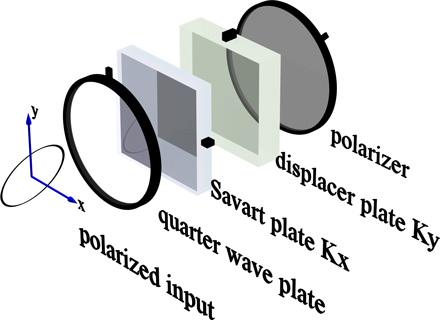
KSTAR optical setup
Coherence imaging systems are advanced polarization interferometers that use spatio-temporal multiplex techniques to capture spectrally-resolved images of the polarization (Stokes parameters) of a radiant scene (e.g. plasma).
Because interferometers are not limited by an input slit, they are naturally suited to high-throughput 2-d spectral imaging. Traditionally the optical path length is scanned and an inverse Fourier transform applied to obtain the source spectrum. However, when spectral information content in a given scene is small, it suffices to image the optical coherence (interferogram) of the light emission at a small number of optical delays in order to capture this information. Our polarization-based optical systems employ temporal and/or spatial multiplex techniques to efficiently capture simultaneously both the spectral and polarization information.
Plasma physics applications for coherence imaging include Doppler spectroscopy, polarization spectroscopy (motional Stark effect and Zeeman), spectral line ratio measurements, plasma density measurements (Stark effect) and broadband imaging such as bremstrahhlung and blackbody. The technologies span the spectrum from 200nm through to mid IR (5um).
Coherence imaging cameras are presently deployed at ANU, Consorzio RFX (Italy), the ASDEX-U tokamak at the Max Planck Institute for Plasma Physics, the DIII-D tokamak at General Atomics, The MAST tokamak at the Culham Centre for Fusion Science and the KSTAR tokamak at the Korean National Fusion Research Institute.